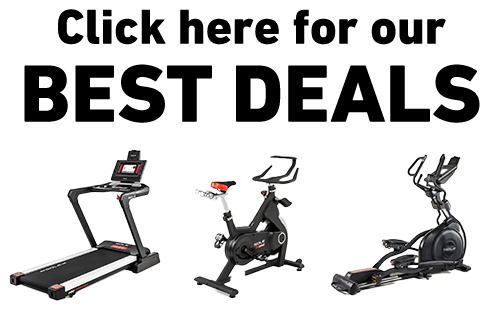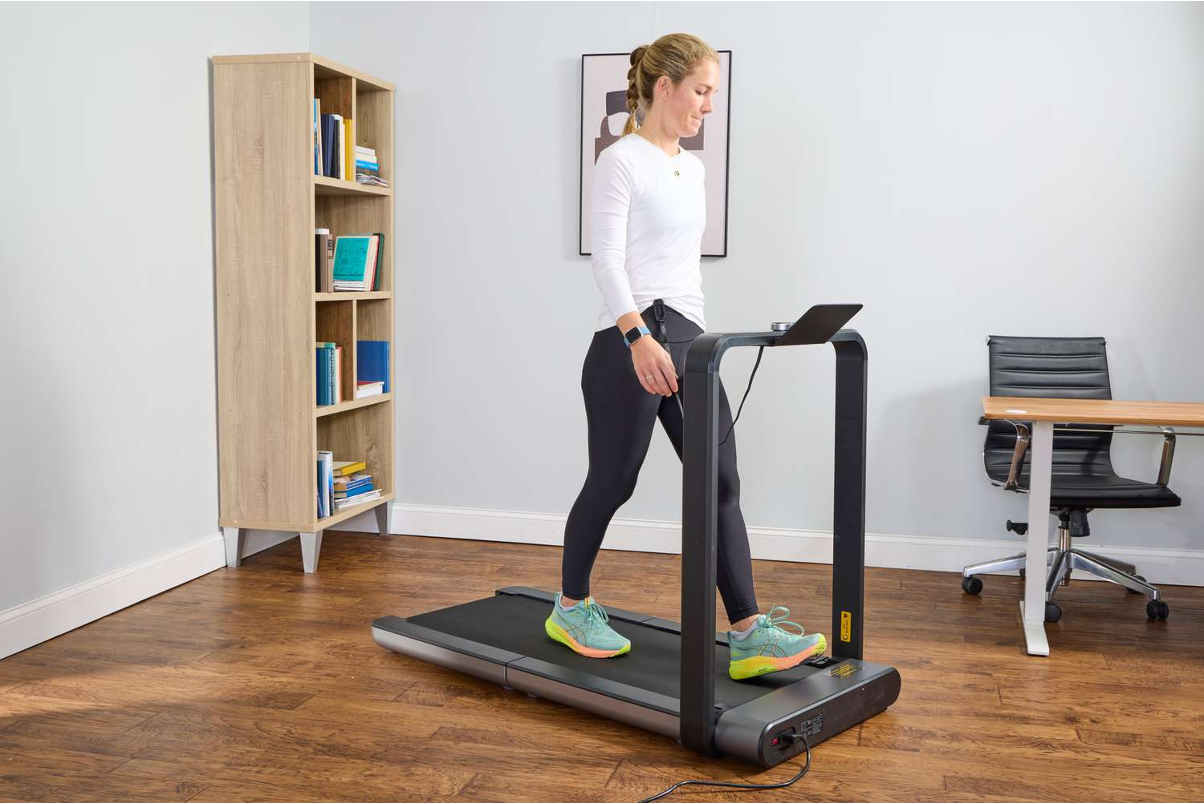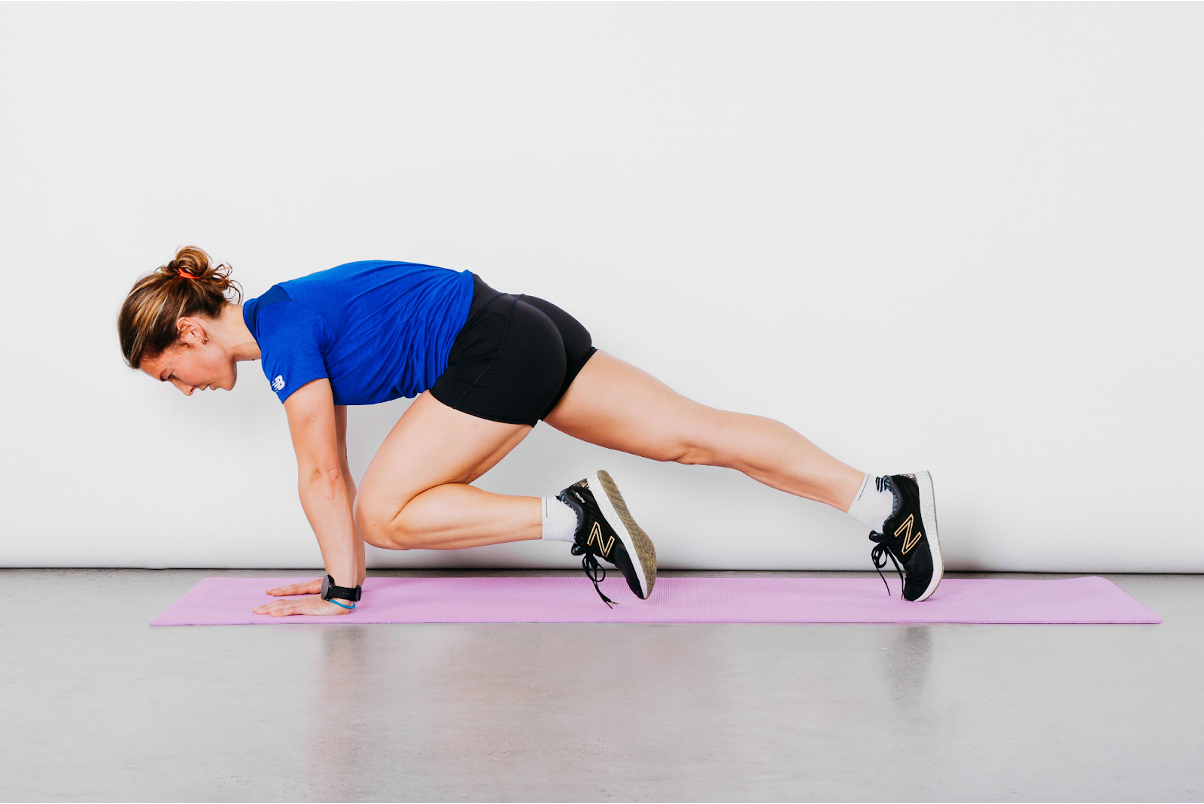Key Takeaways
- Stationary bikes burn 300–600 calories per hour while walking pads average 200–400 calories per hour.
- Walking pads excel for multitaskers who want to work while exercising; bikes offer better high-intensity options.
- Those with knee issues might prefer stationary bikes for non-weight-bearing exercise.
- While both machines work for weight loss when used consistently, the best choice depends on your lifestyle.
- SOLE offers both premium treadmills with walking capabilities and commercial-grade stationary exercise bikes. You can choose the best weight loss solution or combine both for maximum results.
Walking Pad Breakdown
Walking pads are compact treadmills designed to slide under desks or store easily. Most models max out around 3.5–4 mph, positioning them for low to moderate-intensity cardio.
Their streamlined design (typically 55" x 24") makes them ideal for apartments and home offices.
How Walking Pads Burn Calories
Walking pads encourage consistent movement throughout the day rather than intense exercise bursts. At speeds between 2–3.5 mph, your body burns fat efficiently while maintaining a heart rate in the fat-burning zone (60–70% of maximum).
The ability to walk while working removes exercise barriers, creating caloric deficits through increased daily movement.
Calorie Burn Expectations
- Moderate pace (2.5-3 mph): 240–300 calories/hour for a 150-pound person
- Brisk pace (3.5 mph): 350–400 calories/hour
- Working while walking (1.5 mph): 150 calories/hour
Many users report getting 5,000–10,000 extra steps daily by walking during meetings or TV time, translating to an additional 250–500 calories burned without formal workout time.
Joint Impact & Sustainability
Walking is naturally low-impact, with quality walking pads featuring cushioned surfaces that reduce force on joints. This gentle nature makes them suitable for long-term use without the joint deterioration sometimes linked with higher-impact activities.
|
At SOLE, we're proud to offer top-quality exercise equipment designed for home and gym use. Our machines are built to meet the highest standards of durability and performance, making them ideal for fitness enthusiasts at any level. SOLE Products
|
Stationary Bike Essentials
Stationary bikes offer efficient cardiovascular workouts with precisely controlled resistance levels. Their ability to transition between casual rides and high-intensity sessions makes them versatile for weight management across all fitness levels.
Calorie-Burning Potential
- Moderate intensity (50–70% effort): 300–450 calories/hour
- High intensity: 600+ calories/hour
- HIIT sessions: Can exceed 800 calories/hour
The efficiency comes from maintaining consistent resistance regardless of speed, allowing controlled progressive overload through resistance adjustments.
Low-Impact Benefits
Unlike walking where body weight impacts joints, cycling supports your weight through the seat while engaging large muscle groups. This makes bikes exceptionally joint-friendly for people carrying excess weight, enabling longer training sessions crucial for weight loss.
Space and Practical Considerations
Most upright bikes need about 4' x 2' of space, with many featuring transport wheels and foldable frames. While less compact than walking pads, modern bikes are more apartment-friendly than previous generations.
Direct Comparison: Fat-Burning Analysis
30-Minute Session Comparison
- Walking pad (moderate pace): 100-150 calories
- Stationary bike (moderate intensity): 150-225 calories
- Stationary bike (vigorous): 250-350 calories
These averages vary based on weight, muscle mass, and fitness level. Heavier individuals burn more calories on either machine.
Heart Rate Zones & HIIT Potential
Walking pads naturally keep users in the fat-burning zone without constant monitoring. Stationary bikes offer more precise heart rate control through resistance adjustments, allowing targeted training zones.
For HIIT, bikes excel with rapid transitions between maximum effort and recovery. Walking pads' speed limitations (3.5–4 mph max) restrict intensity ceiling, making bikes superior for serious HIIT training.
Who Should Choose a Walking Pad
Beginners & Rehab Patients
The natural walking motion requires no special technique, making it accessible for exercise newcomers. Starting speeds as low as 0.5 mph allow gradual progression.
Work-From-Home Professionals
Walking at 1–2 mph doesn't interfere with typing or communication. Many users walk 2–3 hours daily while working, accumulating significant calorie deficits without sacrificing productivity.
Space-Limited Users
Most models slide under furniture and operate quietly, making them apartment-friendly for early morning or late evening sessions.
Who Should Choose a Stationary Bike
High-Intensity Enthusiasts
Immediate resistance adjustment allows true maximum-effort intervals. Virtual cycling classes and apps provide structured workouts with community motivation.
People With Joint Issues
Non-weight-bearing cycling removes impact forces while engaging large muscle groups. Recumbent bikes offer additional back support for those with balance issues.
Variety Seekers
Multiple resistance levels, pre-programmed sessions, and app compatibility combat exercise boredom. Many bikes incorporate upper-body elements for full-body workouts.
Maximizing Weight Loss Results
The most effective approach to weight loss combines smart training progression, workout variety, and proper recovery.
Progressive Overload Strategies
Walking pad progression:
- Increase daily steps by 500 weekly
- Add 0.2 mph speed every two weeks
- Gradually increase incline percentage
Stationary bike progression:
- Increase resistance levels gradually
- Extend sessions by 5 minutes weekly
- Intensify interval work progressively
Optimal Workout Frequency
Aim for 150–300 minutes weekly of moderate-intensity activity on either machine. Daily 30-minute sessions produce better results than occasional longer workouts. Consistency beats intensity for sustainable weight loss.
Combining With Strength Training
Add at least two full-body strength sessions weekly. Muscle tissue burns more calories at rest, creating metabolic advantages that accelerate fat loss.
Nutrition Integration
Create a 250–500 calorie daily deficit through combined exercise and nutrition for 1–2 pound weekly weight loss. Focus on adequate protein intake (0.7–1g per kg body weight) to maintain muscle during weight loss.
Walking Pad vs. Stationary Bike: Complete Comparison
|
Feature |
Walking Pad |
Stationary Bike |
|
Calorie Burn |
200–400 calories/hour |
300–600+ calories/hour |
|
Space Required |
~55" x 24" (slides under desk) |
~48" x 24" (transport wheels) |
|
Joint Impact |
Low-impact, weight-bearing |
Non-weight-bearing, joint-friendly |
|
Speed/Intensity Range |
0.5–4 mph (low to moderate) |
Wide range (easy to high-intensity) |
|
HIIT Capability |
Limited (max 4 mph) |
Excellent (rapid resistance changes) |
|
Multitasking |
Excellent (work while walking) |
Limited (harder to type/work) |
|
Best For |
Beginners, remote workers, small spaces, and daily movement goals |
High-intensity training, joint issues, variety seekers, and serious weight loss |
|
Learning Curve |
None (natural walking) |
Minimal (some technique helps) |
|
Typical Session |
30–120 minutes (can walk longer) |
20–60 minutes (more intense) |
|
Storage |
Slides under furniture |
Foldable models available |
|
Noise Level |
Very quiet |
Quiet (quality models) |
|
Progression Options |
Speed, incline, duration |
Resistance, speed, programs |
|
Heart Rate Control |
Steady fat-burning zone |
Precise zone targeting |
|
Entertainment Options |
Easy to watch TV/work |
Can watch TV, harder to work |
Get the Best of Both Worlds with SOLE's Cardio Equipment
Why choose between walking and cycling when SOLE's premium cardio lineup lets you access both modalities for comprehensive weight loss, with features that outperform basic walking pads and entry-level bikes.
The walking pad vs bike debate misses a crucial point—quality matters more than category. SOLE equipment delivers superior weight loss results whether you prefer walking or cycling.
For walking enthusiasts, SOLE treadmills like the TT8, F63, F89, and F80 offer something walking pads can't: true versatility. Yes, they excel at low-speed walking like any walking pad, but they also allow progression to jogging and running as your fitness improves.
The Cushion Flex Whisper Deck reduces joint impact by 40%, making long walking sessions comfortable while protecting your joints better than basic walking pad surfaces.
SOLE's exercise bikes like the B94 and R92 deliver the calorie-burning intensity you need for serious weight loss. With precise resistance control and built-in programs, you can easily transition between steady-state cardio and HIIT sessions.
The heavy flywheels provide smooth, quiet operation that won't disturb your household—a common complaint with cheaper bikes.
The real advantage? Our SOLE equipment grows with you. Start with gentle walking or easy cycling, then progress to more intense workouts as you get fitter. The commercial-grade construction means your equipment won't break down just as you're seeing results.
The SOLE+ app ties everything together with hundreds of free workouts for both treadmills and bikes. No more guessing about workout structure; just follow along and watch the pounds disappear.
Ready to invest in weight loss equipment that actually lasts? Check out the SOLE collection now!
Frequently Asked Questions (FAQ)
How many calories can I burn on each machine?
Walking pads burn 200–400 calories/hour at moderate paces. Stationary bikes burn 300–600 calories/hour at moderate intensity, exceeding 800 calories during vigorous sessions.
Can I lose weight using just exercise without diet changes?
While possible, results are slower. One hour of moderate cycling burns 400–500 calories - you'd need seven hours weekly to lose one pound through exercise alone. Combined approaches produce superior, more sustainable results.
Which is better for knee problems?
Stationary bikes generally offer better protection due to their non-weight-bearing nature. Recumbent bikes further reduce knee stress through comfortable back positioning. Walking pads may aggravate certain knee conditions despite cushioned surfaces.
How long before I see results?
With 150–300 minutes weekly exercise, most users see measurable weight loss within 3–4 weeks when combined with moderate nutritional adjustments. Visible body composition changes typically require 6–8 weeks of consistent effort.
Should I get a SOLE treadmill or bike for weight loss if I'm just starting out?
Honestly, both work great for weight loss—it really depends on your lifestyle and preferences.
If you're someone who likes to multitask, SOLE treadmills let you walk at slow speeds while working, just like those trendy walking pads, but with way better cushioning and the option to progress to running later.
If you have knee issues or prefer sitting while exercising, SOLE bikes like the recumbent LCR model give you comfortable, joint-friendly workouts that can burn serious calories.




Leave a comment
This site is protected by hCaptcha and the hCaptcha Privacy Policy and Terms of Service apply.